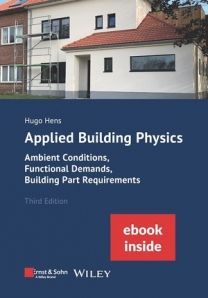About the book
While a first book on building physics refreshes the physics behind the heat, air, moisture behaviour of buildings, and building components, this second book on applied building physics focuses on the question of what a well-balanced building performance consists of.
First, the environmental loads on buildings are explained - i.e. all those parameters that describe the external and internal environmental conditions, with an emphasis on practical implementation. Then follows a comprehensive presentation of those performance requirements that are important at the whole-building level, mainly considering thermal, acoustic, visual and olfactory comfort, indoor air quality, energy consumption, durability, economy and sustainability. This is followed by an in-depth discussion of the requirements regarding thermal, air and moisture behaviour as well as the measured variables at the level of the building construction and components.
The analyses and calculations described in this book result in sustainable buildings made of functional and durable building constructions, with comfortable and healthy indoor climate.
Compared to the second edition, the whole text, included the figures, for the third edition has been reorganised, corrected, revised and expanded where appropriate. Chapter 3 saw the discussion on comfort not only limited to the thermal but extended to the acoustic, visual and olfactory comfort. Also, the indoor air quality part is expanded as is the part on sustainability. Chapter 4 got under interstitial condensation an example from practice added. The last chapter on material properties has been moved to the book on building physics and is replaced by an appendix for quick reference, only containing standard values, for which standard lists are missing.
(Package: Print + eBook)



